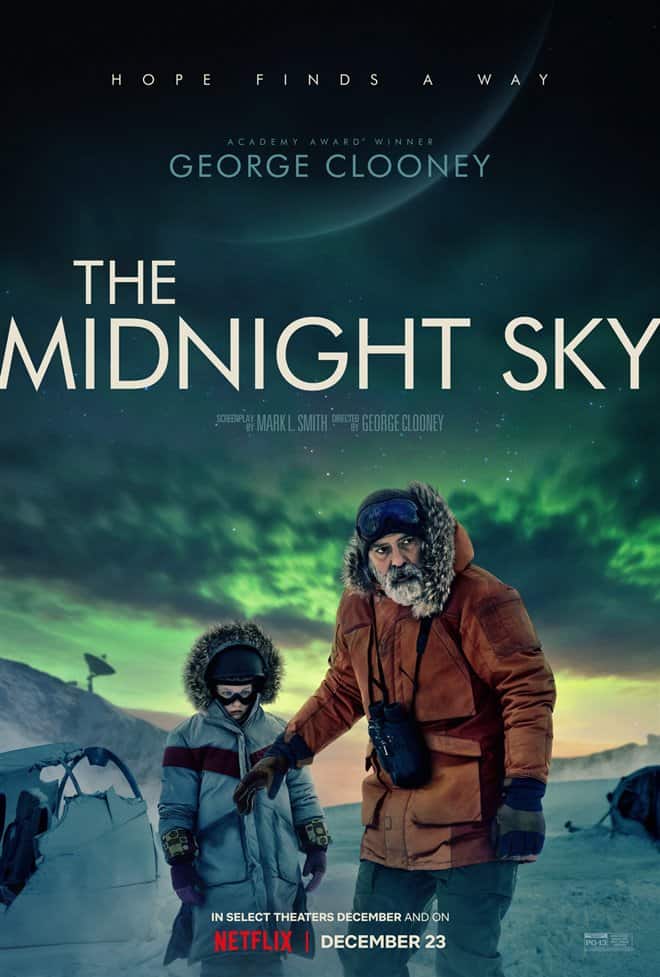Oscar Nominations:
Visual Effects (Kashmir/Lawrence/Solomon/Watkins)
Maybe I’m just in a cranky, obstreperous mood, but I’m very upset about the critical, and the popular, response to this movie – both critics and audiences got this movie wrong. It really is an excellent film and I recommend it to anyone who can appreciate subtle and elegant filmmaking.
Here is what I’m up against:
Brian Tallerico (RogerEbert.com): “The heart of this movie just isn’t there. It’s as weightless as space.”
Kate Stables (Sight&Sound) : “Well intentioned but clumsy arcing themes attempt clunkily to link both plots…” and “George Clooney …can’t salvage this well-intentioned but pedestrian story.”
And an IMDB audience reviewer (Sleepin_Dragon) contributes:
“If I could think of one word to describe this film, it would be dreary, it’s just the most uninspiring, boring snooze fest I have sat through in a long time…”
Overall, this film ranked just above Hillbilly Elegy as the worst of the 41 Oscar-nominated films from 2021 in my combined audience and critical scale. (The audience ranking puts in at the bottom, tied with Mulan!)
But, in my humble opinion, all these folks have it wrong – this is one of the best movies of the year and I’m going to risk my reputation, as an amateur critic, by recommending it to everyone who may not have seen it already.
The film comes to us from George Clooney, a Hollywood icon and former Oscar winner for producing Argo and starring in Syriana. He has received six other Oscar nominations including two for writing and directing Good Night, and Good Luck (05). Clooney has, of course, been a heartthrob for women since his breakout role as a pediatric doctor in the television series ER, nearly three decades ago. He has his own production company and is well known everywhere in the Hollywood community.
Clooney not only directs The Midnight Sky, but he also portrays the main character, Augustine Lofthouse, an aging and terminally ill scientist in 2049. But he is not the only thing ‘terminally ill’: As the movie opens, we learn that Earth itself has suffered something, which is never fully explained, – but really doesn’t need to be – which is destroying the planet and all life on it. Lofthouse is working in an observatory above the Arctic circle and we watch as everyone, except him, is departing the remote outpost to return to family for the final days of life on Earth. Lofthouse stays because he really doesn’t have any family to return to.
It turns out, though, that he isn’t alone – a mute little girl is apparently left behind and, although he radios for someone to return to pick her up, it ends up that he becomes responsible for Iris and, as a lonely scientist, he tries to relate to a young child in ways that he has never experienced before. Some of the best parts of the story are in his strange relationship with a child who (except for four significant words) never utters a sound over many days. (Iris is played by 7-year old Caoilinn Springall. Like Helena Zengel who plays a similarly silent girl in News of the World, she has remarkable facial expressions and is able to communicate a lot with her eyes.)
That story, by itself, is intriguing enough in its possibilities. But it turns out as happens in good stories, that there is more going on. Lofthouse discovers that there is a long-forgotten space mission, with living humans on it, that is slowly making its way back to Earth, unaware of the disaster awaiting them. He decides that the last best hope for humankind is to alert them to the impending disaster so they can make plans to avoid landing on Earth. Instead, they can have an opportunity to start over again by returning to the planet they had discovered that could, indeed, support life. However, the communications equipment at his outpost are not strong enough to reach the spaceship, so he, and the mute child, must travel through Arctic storms several days to reach a stronger antenna.
This journey – some of it filmed in a real Iceland blizzard – provides the test of their relationship and the impetus for some very tense and hazardous moments. (This part of the film has been compared to The Revenant and is hailed, by most of the critics as the best part of the film.). Eventually – towards the end of the film – they reach the outpost, establish communication with the spaceship, and, well the movie resolves, although I won’t say how.
The Arctic scenes occupy a good third of the movie, but there is more going on. After the spaceship is identified, as Aether, we are then transported to the crew and their life on a years-long mission to travel to, explore, and document whether a specific moon (K23) could actually support human life, and return to Earth with the results. The crew consists of three men and two women, one of which, Sully (Lily James) becomes pregnant – yes sex happens in space. (Lily James became pregnant after she accepted the role and before filming started so Clooney and writer Mark L. Smith had to modify the script to accommodate the circumstances. Actually, though, the pregnancy adds to the drama nicely.)
The space scenes were filmed in a Studio in England and relied on much of the technology, and the Visual Effects team, that won the Oscar for Gravity (13). Some critics have noted that this part of the film mirrors much of the drama from that earlier space film, without adding a whole lot. And the critics have also rightly added that this part of the film can tend to plod along a bit with characters that are not fully developed. But the visual effects are stunning at times and one scene in particular, where a crew member is in fatal distress, is, simply amazing.
So, about a third of the film takes place above the arctic circle and involves a scientist and a mute child. Another third occurs in outer-space and revolves around a small team of explorers. The remaining parts of the film are Augustine’s flashbacks to when he was much younger and just starting his career and life. The flashbacks are critical to understanding the story, not just the Augustine character, so pay attention to what happens there.
These three separate stories all come together in the final moments of the film in a terrific conclusion that I wasn’t prepared for. (There was one critic who said he saw it coming, and, well, if true, then he’s a smarter man than I). Other critics thought the ending was manipulative, but I disagree. I think it made sense and I loved the way that all the pieces combined to give a final sense of hope to an otherwise dismal future.
This movie was a delight to watch and wonderful to ponder. If you love movies that surprise you and make you think at the same time they stimulate the senses, then you’ll love The Midnight Sky. (4 Stars)
Available on Netflix


